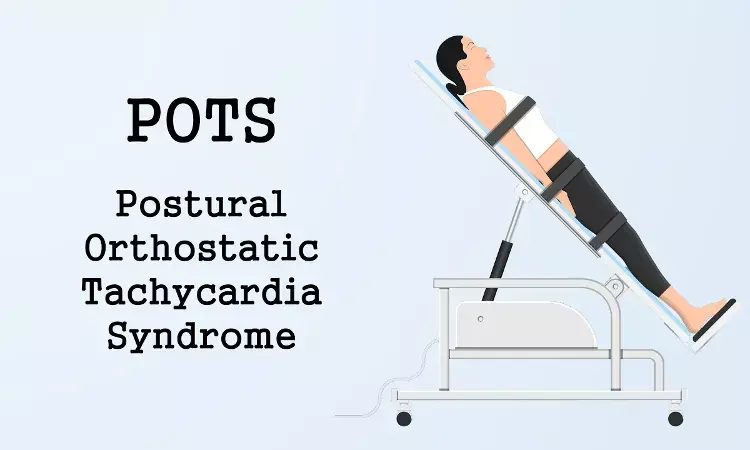- Home
- Medical news & Guidelines
- Anesthesiology
- Cardiology and CTVS
- Critical Care
- Dentistry
- Dermatology
- Diabetes and Endocrinology
- ENT
- Gastroenterology
- Medicine
- Nephrology
- Neurology
- Obstretics-Gynaecology
- Oncology
- Ophthalmology
- Orthopaedics
- Pediatrics-Neonatology
- Psychiatry
- Pulmonology
- Radiology
- Surgery
- Urology
- Laboratory Medicine
- Diet
- Nursing
- Paramedical
- Physiotherapy
- Health news
- Fact Check
- Bone Health Fact Check
- Brain Health Fact Check
- Cancer Related Fact Check
- Child Care Fact Check
- Dental and oral health fact check
- Diabetes and metabolic health fact check
- Diet and Nutrition Fact Check
- Eye and ENT Care Fact Check
- Fitness fact check
- Gut health fact check
- Heart health fact check
- Kidney health fact check
- Medical education fact check
- Men's health fact check
- Respiratory fact check
- Skin and hair care fact check
- Vaccine and Immunization fact check
- Women's health fact check
- AYUSH
- State News
- Andaman and Nicobar Islands
- Andhra Pradesh
- Arunachal Pradesh
- Assam
- Bihar
- Chandigarh
- Chattisgarh
- Dadra and Nagar Haveli
- Daman and Diu
- Delhi
- Goa
- Gujarat
- Haryana
- Himachal Pradesh
- Jammu & Kashmir
- Jharkhand
- Karnataka
- Kerala
- Ladakh
- Lakshadweep
- Madhya Pradesh
- Maharashtra
- Manipur
- Meghalaya
- Mizoram
- Nagaland
- Odisha
- Puducherry
- Punjab
- Rajasthan
- Sikkim
- Tamil Nadu
- Telangana
- Tripura
- Uttar Pradesh
- Uttrakhand
- West Bengal
- Medical Education
- Industry
High Salt Intake Benefits Patients with Postural Tachycardia Syndrome

Studies have demonstrated that postural tachycardia syndrome (POTS) patients have a decreased volume of plasma and high serum norepinephrine levels that occur with standing. In addition, rapid volume expansion with intravenous saline solutions has been shown to reduce upright tachycardia and improve symptoms in patients suffering from POTS. In a recent study, researchers have proved that high dietary sodium intake benefits patients with POTS. The study findings were published in the Journal of the American College of Cardiology on April 26, 2021.
A quarter-century ago, a series of studies demonstrated that salt supplementation can increase plasma volume and orthostatic tolerance in patients with unexplained syncope as well as increasing baroreceptor sensitivity. However, no studies have prospectively evaluated whether increased dietary sodium intake would have similar effects in POTS. Therefore, researchers of the Vanderbilt University Medical Center, Tennessee, USA conducted a study to evaluate whether a high sodium (HS) diet reduces orthostatic tachycardia (Δ heart rate) and upright heart rate compared with low sodium (LS) diet in POTS patients, and secondarily its effect on plasma volume (PV) and plasma norepinephrine.
In this crossover study, researchers enrolled 14 patients with POTS and 13 healthy control persons and examined them over a period of 6 days with a low-sodium diet (10 mEq sodium per day) or a high-sodium diet (300 mEq sodium per day). They measured the supine and standing heart rate, blood pressure, serum aldosterone, plasma renin activity, blood volume, and plasma norepinephrine and epinephrine levels.
Key findings of the study were:
- Among the POTS patients, the researchers found that the HS diet reduced upright heart rate and Δ heart rate compared with the LS diet.
- They also found that total blood volume and PV increased, and standing norepinephrine decreased with the HS compared with the LS diet.
- However, they noted that upright heart rate, Δ heart rate, and upright norepinephrine remained higher in POTS patients than in healthy control subjects on the HS diet, despite no difference in the measured PV.
POTS Group:
» Upright heart rate: median 117 beats/min,
» Δ heart rate: 46 beats/min,
» Upright norepinephrine levels: 753 pg/ml.
Healthy Control Group:
» Upright heart rate: 85 beats/min
» Δ heart rate: 19 beats/min,
» Upright norepinephrine levels: 387 pg/ml.
The authors concluded, "In POTS patients, high dietary sodium intake compared with low dietary sodium intake increases plasma volume, lowers standing plasma norepinephrine, and decreases Δ heart rate. "
For further information:
Medical Dialogues Bureau consists of a team of passionate medical/scientific writers, led by doctors and healthcare researchers. Our team efforts to bring you updated and timely news about the important happenings of the medical and healthcare sector. Our editorial team can be reached at editorial@medicaldialogues.in.
Dr Kamal Kant Kohli-MBBS, DTCD- a chest specialist with more than 30 years of practice and a flair for writing clinical articles, Dr Kamal Kant Kohli joined Medical Dialogues as a Chief Editor of Medical News. Besides writing articles, as an editor, he proofreads and verifies all the medical content published on Medical Dialogues including those coming from journals, studies,medical conferences,guidelines etc. Email: drkohli@medicaldialogues.in. Contact no. 011-43720751


